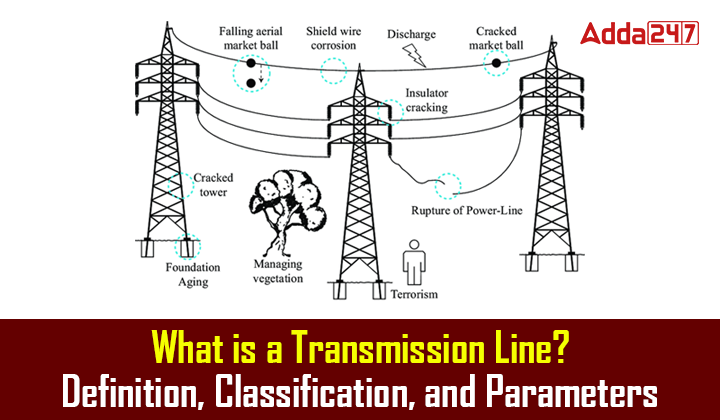Table of Contents
Introduction
A transmission line is a crucial component of the electrical power system used to transmit electrical energy from power plants to distribution substations and ultimately to consumers. It is essentially a high-voltage cable system designed to carry large amounts of electricity over long distances with minimal loss.
The primary purpose of transmission lines is to transport bulk electrical power from centralized power generation facilities (such as hydroelectric plants, coal-fired power plants, nuclear power plants, or renewable energy sources) to various regions and cities where electricity is consumed. The high voltage used in transmission lines reduces energy losses that would otherwise occur due to resistance.
Definition of Transmission Lines
Transmission lines are typically made of conductive materials such as copper or aluminum, which have low resistance to allow the efficient flow of electrical current. They are supported by tall towers or poles to keep the cables at a safe height and to maintain a distance from the ground.
As the electricity travels through the transmission lines, it encounters some resistance, leading to a slight loss of energy in the form of heat. To minimize these losses, the voltage is typically increased using transformers at the power generation end and reduced at the distribution substations before delivering electricity to end-users.
Transmission lines play a vital role in the reliable and efficient supply of electricity to consumers, allowing power to be distributed across vast distances and ensuring that energy demands are met in various regions. They are a critical part of the overall electrical grid infrastructure, which encompasses generation, transmission, and distribution networks, working together to supply electricity to homes, businesses, and industries.
Classification of Transmission Line
Transmission lines can be classified based on various criteria. The most common classification of transmission lines is based on the operating voltage levels and configuration. Here are the main classifications:
Based on Voltage Levels
- High Voltage (HV) Transmission Lines: These lines operate at voltage levels typically above 69 kilovolts (kV). They are used for long-distance transmission of power from large power plants to substations or between different regions.
- Extra High Voltage (EHV) Transmission Lines: EHV lines operate at voltage levels ranging from 220 kV to 765 kV. They are used for very long-distance transmission and to interconnect major power grids or networks.
- Ultra High Voltage (UHV) Transmission Lines: UHV lines operate at extremely high voltage levels, usually above 765 kV. They are employed for super long-distance transmission and are used in countries with extensive power grids.
Based on Configuration
- Overhead Transmission Lines: Overhead lines are the most common type, with conductors suspended from towers or poles above the ground. They are cost-effective, easy to construct, and maintain.
- Underground Transmission Lines: These lines have conductors buried underground, which makes them less visible and reduces the impact on landscapes. However, they are more expensive to install and maintain compared to overhead lines.
- Submarine Transmission Cables: Submarine cables are used for power transmission across bodies of water, such as oceans or large lakes. They are essential for interconnecting islands or crossing water barriers.
Based on Conductor Types
- ACSR (Aluminum Conductor Steel Reinforced): These conductors consist of a central steel core surrounded by aluminum strands. ACSR conductors offer both strength and conductivity, making them widely used in overhead transmission lines.
- AAC (All Aluminum Conductor): AAC conductors consist of only aluminum strands and are lighter than ACSR conductors. They are commonly used in moderate voltage applications.
- ACCC (Aluminum Conductor Composite Core): ACCC conductors have carbon and glass fibers in the core, providing higher strength and thermal capacity compared to traditional conductors. They are used to upgrade existing lines or increase power transfer capacity.
These classifications help in organizing and planning the transmission grid, ensuring efficient and reliable electricity delivery over long distances. The choice of transmission line depends on factors like distance, power capacity, environmental considerations, and economic viability.
Parameters of Transmission Line
The design and performance of a transmission line are determined by various parameters that influence its efficiency, capacity, and reliability. Some of the key parameters of a transmission line include:
- Voltage Level: The voltage level of a transmission line is a critical parameter that determines its power-carrying capacity and the distance it can efficiently transmit electricity. Transmission lines can be categorized as high voltage (HV), extra high voltage (EHV), or ultra high voltage (UHV) based on their operating voltage levels.
- Current Carrying Capacity: The current carrying capacity of a transmission line refers to the maximum amount of electrical current that the line can safely handle without exceeding its thermal limits. It depends on factors such as conductor size, material, and ambient temperature.
- Line Length: The length of the transmission line plays a significant role in determining the amount of power loss during transmission. Longer lines generally result in higher resistive losses and require careful design to maintain efficiency.
- Conductor Size and Material: The size and material of the conductors used in the transmission line impact its current-carrying capacity and electrical resistance. Common conductor materials include aluminum and copper, with varying sizes to meet different power transmission requirements.
- Line Configuration: Transmission lines can have various configurations, including single-circuit, double-circuit, or multi-circuit. The configuration determines the capacity and redundancy of the transmission system.
- Line Impedance: The impedance of a transmission line is the combination of its resistance, inductance, and capacitance. It affects the voltage drop along the line and the line’s ability to transfer power efficiently.
- Line Insulation: Insulators are used to support the conductors and isolate them from the transmission towers or poles. The type and quality of insulators determine the line’s ability to withstand electrical stresses and environmental conditions.
- Line Losses: Transmission lines have inherent power losses due to the resistance of the conductors and other components. Reducing line losses is essential to ensure efficient power transfer.
- Corona Effect: Corona discharge occurs when the electric field strength around the conductors exceeds a certain threshold, leading to power losses and radio interference. The design of the transmission line must consider measures to control or mitigate the corona effect.
- Sag and Tension: Due to the weight of the conductors and environmental conditions, transmission lines experience sag, which affects their clearance from the ground or other objects. Proper tensioning and sag control are essential for safe and reliable operation.
- Right-of-Way: The right-of-way refers to the land or space required for the construction and maintenance of the transmission line. Obtaining the necessary rights-of-way and addressing environmental concerns are crucial for project success.
Optimizing these parameters is vital for achieving an efficient and reliable transmission system. Engineers and planners carefully consider these factors during the design and construction of transmission lines to ensure safe and cost-effective power delivery over long distances.




 DRDO Recruitment 2025 for 764 Senior Tec...
DRDO Recruitment 2025 for 764 Senior Tec...
 RIICO Assistant Site Engineer Recruitmen...
RIICO Assistant Site Engineer Recruitmen...
 IOCL Apprentice Syllabus 2025, Check New...
IOCL Apprentice Syllabus 2025, Check New...





